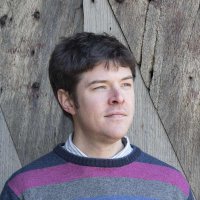- Blogs
- Posted
Awaab Ishak’s death shows that building physics are a life and death matter
Advances in building physics in recent years are leading to an ever-increasing understanding among experts of the risks that a litany of pollutants can pose to building occupants. But this has not stopped vulnerable people from living – and dying - in substandard buildings that exacerbate these risks. Urgent action is needed, Toby Cambray explains, to better communicate and decisively tackle the risks buildings can pose to their occupants.
This article was originally published in issue 43 of Passive House Plus magazine. Want immediate access to all back issues and exclusive extra content? Click here to subscribe for as little as €15, or click here to receive the next issue free of charge
Like many who will be reading this, I was shocked, appalled and saddened, but not surprised by the tragic death of Awaab Ishak. It is an indictment of our society that it takes the loss of life to draw attention to issues that afflict so many. We’ve seen the same thing happen with systemic racism, institutional abuse, and fire safety. Despite Awaab’s case being predictable (and preventable) it is disconcerting for the headlines to land so close to home. His is a case close to my heart as someone trying to understand moisture in buildings, and avert its potentially horrendous effects.
The issue of mould in buildings has many of the characteristics of a wicked problem. Complete elimination of mould is not feasible, as spores occur naturally and only lead to harmful effects in specific circumstances. There are multiple contributing factors, some of which are themselves extremely complex, being subject to socio-economic influences. Even some of the purely technical aspects are not fully understood and can be highly localised and context-specific.
It is however clear that simple, if difficult steps can be taken right away, but it’s crucial that policy makers, managers, landlords, designers/specifiers, maintenance teams and tenants understand some basics in order to address the matter effectively and efficiently. The standard fall back advice given to tenants is that mould is a matter of “lifestyle choices”. While moisture generation from things like cooking and drying laundry is important, it is disingenuous to dismiss problems on this basis. Firstly, such choices may be of Hobson’s type, and secondly, it is reasonable to expect our homes to not make us ill if we choose to eat cooked food or wear dry clothes.
The matter is of course multidimensional, encompassing ventilation, thermal performance and heating, as well as moisture generation. These factors are interlinked, and a key common denominator is energy price and the threat of fuel poverty. The blocking of drafts is a common behaviour in our relatively leaky old houses, and something that’s often encouraged. While this can improve comfort and reduce bills, there is a risk of under-ventilating. While building physicists draw a clear distinction between intentional ventilation and unintentional infiltration, to people struggling to afford warmth it’s all just cold air. For this reason, there is a significant risk that we will see more ill health or worse as a direct result of mould this winter.
The paradigm is also dominated by over-simplified concepts of building physics. While it’s true that internally generated water vapour, ventilation and low surface temperatures are important factors in mould, high levels of moisture as a result of rain ingress, plumbing leaks and so on are also frequently the decisive factor.
The debate on fabric versus low carbon heating, which I’ve also waded into, is also relevant here; heat pumps don’t of themselves reduce mould risk – even higher air temperatures are of limited benefit. More economic heating might help but only if the savings are ‘spent’ on more ventilation, and heat pump performance needs to be consistently very good to make any sort of operational saving.
In the short term, it is essential to support those most in need with fuel bills, to reduce the tendency to under-ventilate as a cost cutting strategy. Medium term solutions might be to improve ventilation, generally moving towards good quality continuous extract systems, which manage moisture much better than random natural ventilation and fans on over-run timers. But in the long term, a whole-home approach is essential. Fabric improvements which carefully consider and avoid thermal bridges and other surface temperature problems are essential; effective and efficient ventilation is a prerequisite; the old mantra of build tight, ventilate right has never been more important.
I find myself deeply affected by Awaab’s case: it is a stark reminder that the seemingly abstract calculations, simulations, sketches, discussions and advice that I produce as part of my work can have profound impacts. I believe one of the most important things I can do is to communicate building physics better. Speaking to non-experts, the response to speaking about fRSi¬ values, LIM curves and air change rates is usually polite bafflement. We all need to do better; building physicists must communicate the importance of these deep technical topics more clearly, and policy makers, managers, clients, contractors need to listen. Awaab’s death has thrown the spotlight on the subject; let’s use it to prevent this happening again.



